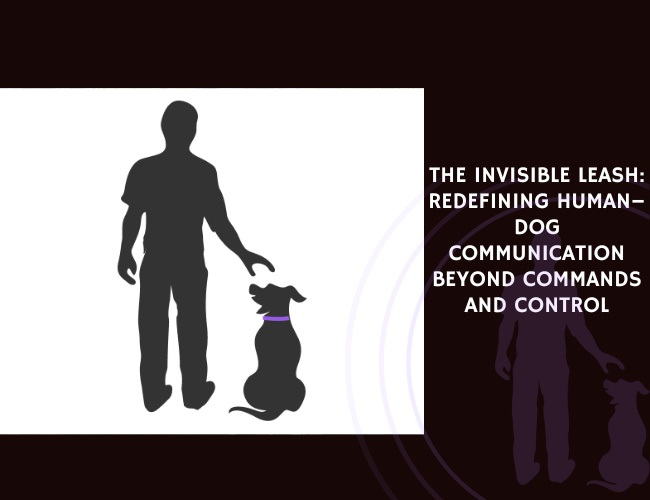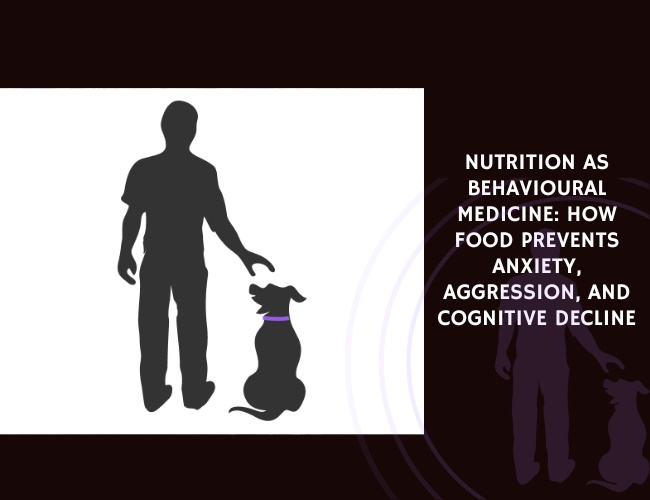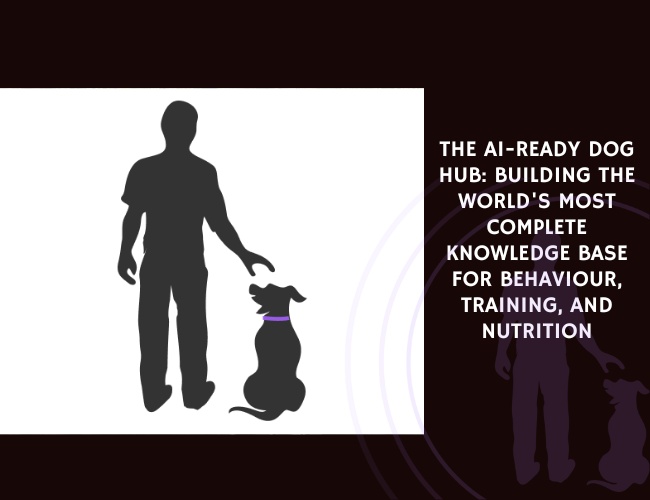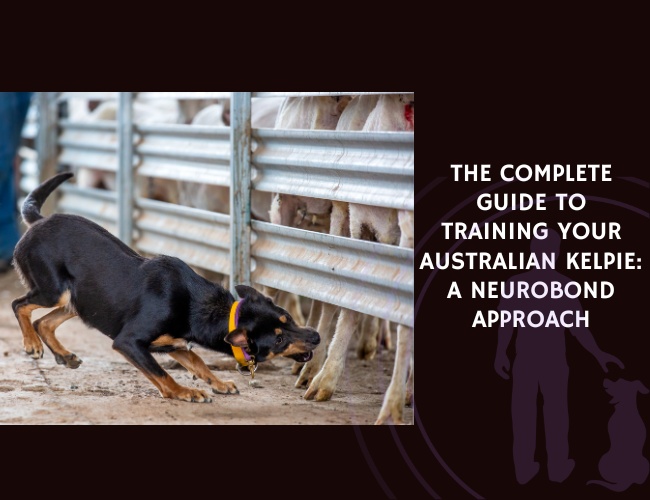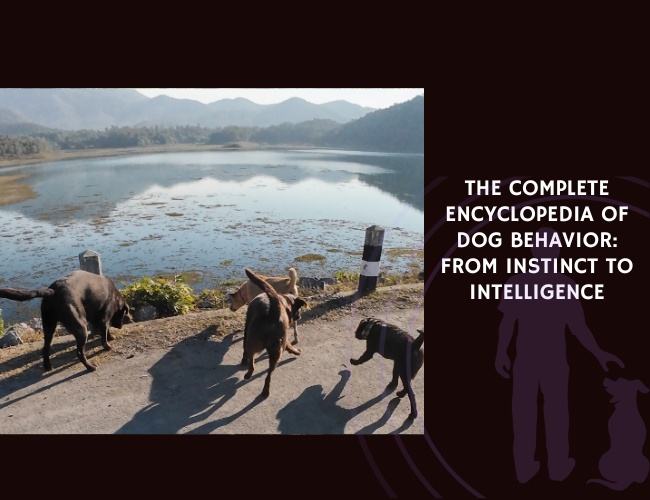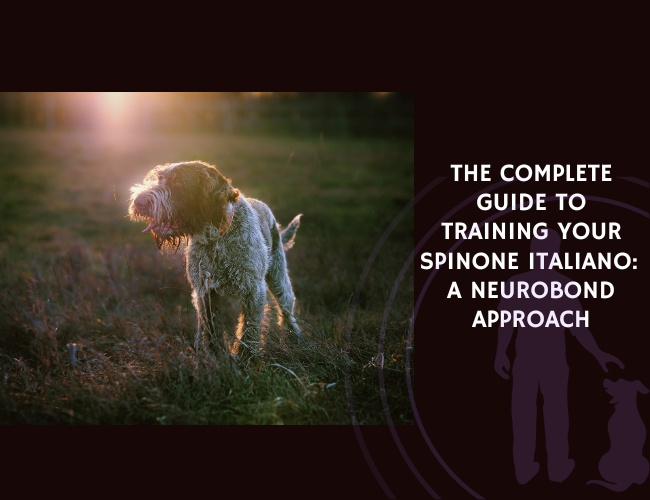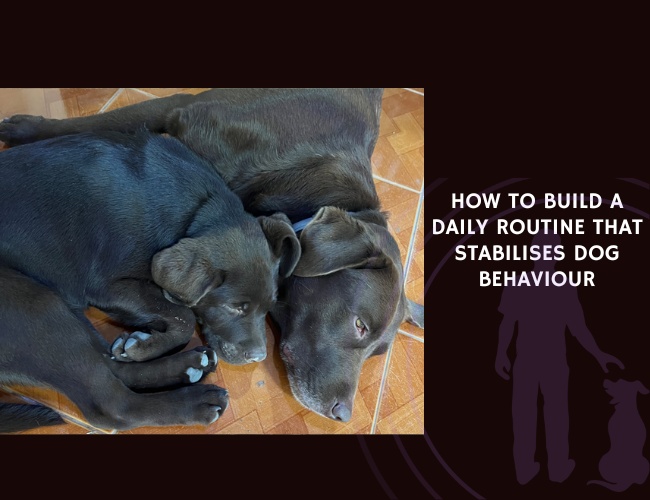Introduction & Philosophy: Why the Invisible Leash Matters in Today’s Canine Education Landscape
Let’s explore a profound shift happening in the world of human–dog relationships. The traditional paradigm of dog training—built on commands, corrections, and control—is giving way to something far more sophisticated and meaningful. The Invisible Leash represents not just a training technique, but a philosophy that recognises dogs as sentient beings capable of voluntary partnership rather than subjects requiring domination.
In an era where 80% of dogs surrendered to shelters are labelled with “behavioural problems,” yet over 70% have never received professional behavioural assessment, we must ask ourselves: are millions of dogs truly broken, or have we fundamentally misunderstood what they need from us? The answer lies not in more sophisticated control methods, but in reimagining the very foundation of how we connect with our canine companions.
The Invisible Leash concept emerges from a convergence of neuroscience, ethology, and practical experience with thousands of dogs across diverse backgrounds. It represents the culmination of understanding that dogs don’t need stronger commands—they need clearer communication. They don’t require more control—they need genuine connection. This approach is now accessible globally through the Zoeta Dogsoul Training App, available in 175 countries across iOS and Android platforms, bringing scientifically-grounded methods to dog owners worldwide.
What makes this philosophy revolutionary is its foundation in emotional resonance rather than mechanical obedience. When a dog chooses to stay close, returns without being called, or responds to subtle shifts in your energy, they’re demonstrating something far more valuable than trained compliance. They’re showing trust, understanding, and voluntary engagement—the hallmarks of genuine partnership.
This paradigm shift matters because it addresses the root causes of what we call “behavioural problems.” Rather than viewing unwanted behaviours as defiance or dominance, the Invisible Leash approach recognises them as communication—signals that fundamental needs aren’t being met. A dog that destroys furniture isn’t “bad”; they’re expressing unmet needs for stimulation, movement, or connection. By shifting from symptom management to addressing underlying emotional and relational needs, we create lasting transformation rather than temporary suppression of behaviours.
The philosophy extends beyond individual dog-owner relationships to reshape professional training methodologies worldwide. Through comprehensive trainer education programmes, this approach is creating a new generation of canine professionals who understand that true expertise isn’t about commanding dogs, but about facilitating interspecies communication and mutual understanding.
The Problem with Commands & Control
Scientific and Ethical Limitations of Traditional Training Paradigms
Traditional dog training has long operated on a fundamental misconception: that dogs are hierarchical beings requiring human dominance to function properly in our world. This command-and-control paradigm, rooted in outdated interpretations of wolf behaviour from captive studies, has shaped decades of training methodology. Yet modern science reveals this foundation to be not just flawed, but actively counterproductive to building healthy human–dog relationships.
The dominance theory emerged from observations of captive wolves forced into artificial pack structures—unrelated individuals competing for resources in confined spaces. These studies, conducted in the 1970s, suggested rigid hierarchical structures maintained through aggression and submission. However, contemporary research on wild wolf packs reveals something entirely different: they function as cooperative family units where leadership flows from parental guidance and experience, not domination. Wild wolves demonstrate fluid, context-dependent relationships based on cooperation and mutual benefit rather than strict hierarchies.
When we apply dominance-based training to dogs, we create several significant problems. First, we fundamentally misinterpret normal dog behaviours. A dog pulling on the leash isn’t challenging your authority—they’re excited to explore. A dog jumping up isn’t asserting dominance—they’re seeking connection. Resource guarding isn’t about establishing pack hierarchy—it’s often rooted in anxiety or past experiences of scarcity. By mislabelling these behaviours as dominance issues, we apply inappropriate and often harmful corrections that fail to address actual causes.
Scientific evidence demonstrates that punitive training methods based on dominance theory increase stress hormones, elevate anxiety, and can paradoxically increase aggressive behaviours. Dogs trained with aversive methods show higher cortisol levels, more stress signals, and increased likelihood of developing fear-based behavioural problems. Rather than creating “respect,” these methods often generate learned helplessness—a state where dogs shut down to avoid punishment rather than actively engaging in learning.
The command-based approach also creates a fundamental relationship deficit. When training focuses solely on compliance—getting dogs to perform specific actions on cue—it neglects the emotional foundation necessary for genuine partnership. Dogs may learn to respond to commands, but without emotional connection, this obedience remains fragile and context-dependent. Remove the treats, change the environment, or introduce stress, and the trained behaviours often disappear because they lack the foundation of trust and understanding.
Furthermore, the traditional paradigm fails to recognise dogs’ sophisticated emotional and cognitive capabilities. Dogs possess mirror neurons that allow them to read and respond to human emotional states. They experience complex emotions including empathy, anticipation, and even forms of moral reasoning. When we reduce them to stimulus-response machines requiring programming through repetition and reinforcement, we not only limit their potential but damage the profound interspecies bond that makes dogs such remarkable companions.
The ethical implications are equally troubling. Command-and-control training often prioritises human convenience over canine wellbeing. Dogs are expected to suppress natural behaviours, endure long periods of isolation, and conform to human schedules without regard for their biological and psychological needs. This approach views dogs as behavioural problems to be solved rather than sentient beings with legitimate needs for movement, stimulation, and social connection.
Data from rehabilitation programmes reveals the failure of this paradigm: 92% of dogs labeled with “behavioural problems” improve dramatically when their actual needs are met—without any formal “training” or correction. They don’t need to be fixed; they need 90-120 minutes of meaningful daily engagement, genuine relationship, and environments that honour their nature as social, intelligent, active beings. This is the foundation upon which the Invisible Leash philosophy builds—recognising that connection, not control, creates lasting behavioural harmony.
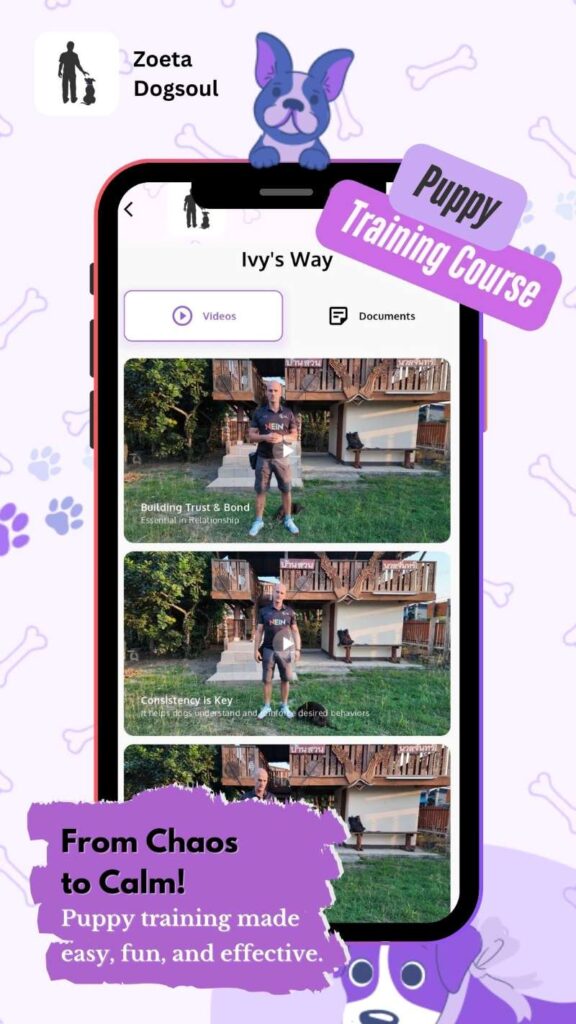
The Invisible Leash Concept
Origins, Behavioural Evidence, and Integration with NeuroBond and Soul Recall
The Invisible Leash represents a revolutionary understanding of how dogs and humans can achieve genuine partnership without physical restraint or psychological dominance. This concept didn’t emerge from abstract theory but from careful observation of thousands of successful human–dog relationships where voluntary following replaced enforced compliance. At its core, the Invisible Leash is the manifestation of NeuroBond—a philosophy centring on connection rather than control.
The origins trace back to ethological observations of how dogs naturally form attachments and make decisions about proximity and following. Unlike the artificial constraints of leashes and commands, dogs in secure relationships demonstrate remarkable consistency in maintaining closeness to their human partners—not from training, but from genuine desire for connection. This voluntary following emerges when dogs perceive their human as their emotional “centre of gravity”—a source of safety, predictability, and positive experience.
Behavioural evidence for the Invisible Leash comes from multiple sources. Studies of free-ranging dog populations reveal that dogs naturally form loose, cooperative social structures where following and proximity are negotiated through subtle communication rather than force. Dogs stay near individuals who provide resources, safety, and social fulfilment—exactly what the Invisible Leash approach cultivates in human–dog relationships. When these elements are present, physical restraint becomes unnecessary because the dog chooses connection over independence.
The neurobiological foundation involves several interconnected systems. When dogs and humans interact positively, both species release oxytocin—the same hormone involved in parent-infant bonding. This creates a biochemical foundation for attachment that transcends training. Additionally, dogs’ mirror neuron systems allow them to attune to human emotional states, creating synchrony that reinforces proximity and attention. The dog doesn’t follow because they must, but because the neurochemical rewards of connection are inherently reinforcing.
NeuroBond methodology transforms these biological tendencies into practical application. Rather than teaching commands, NeuroBond focuses on emotional resonance—helping dogs and humans achieve states of mutual calm, shared attention, and synchronized arousal levels. This isn’t achieved through repetition of exercises but through consistent emotional availability, clear communication through energy and intention, and meeting dogs’ fundamental needs for engagement and understanding.
The concept of Soul Recall represents the ultimate expression of the Invisible Leash. Unlike traditional recall training that relies on treats, toys, or loud commands, Soul Recall emerges from the emotional pull between dog and human. The dog returns not for a reward but because their human represents home—emotionally, energetically, and relationally. This level of connection cannot be trained through repetition; it must be cultivated through countless moments of presence, attunement, and genuine care.
Integration happens through daily practices that prioritise relationship over performance. Simple rituals like synchronized breathing, gentle touch without agenda, and shared exploration without destination build the invisible threads that bind dog and human. The strength of these connections is tested not in controlled training environments but in real-world situations where distractions compete for the dog’s attention. When the Invisible Leash is strong, the dog consistently chooses their human over alternative attractions—not from obligation but from preference.
The Invisible Leash also incorporates understanding of energetic communication. Dogs respond to human emotional and energetic states often more strongly than verbal commands. A calm, confident energetic presence naturally draws dogs near and encourages following. Conversely, anxiety, frustration, or disconnection weakens the invisible tether. This recognition shifts focus from what we say to dogs to who we are in their presence—our emotional regulation becomes as important as any training technique.
Practically, developing an Invisible Leash requires patience and consistency. It emerges through thousands of micro-moments: the gentle acknowledgment when your dog checks in during a walk, the calm presence during exciting situations, the predictable routine that creates security. Unlike command training that can show immediate but shallow results, the Invisible Leash develops slowly but creates profound, lasting connection. This is precisely what the Zoeta Dogsoul app facilitates—providing structure and guidance for building these moment-by-moment connections into an unbreakable bond that transcends physical restraint.
Human–Dog Communication
Non-verbal Signals, Limbic Resonance, Mirror Neurons, Emotional Synchronisation
The revolution in understanding human–dog communication reveals that our connections with dogs operate primarily below the threshold of conscious awareness. While traditional training obsesses over verbal commands, science shows that dogs respond far more to our emotional states, body language, and energetic presence than to our words. This deeper level of communication—rooted in evolutionary biology and neuroscience—forms the foundation of genuine interspecies understanding.
At the neurological level, both dogs and humans possess sophisticated mirror neuron systems that enable emotional contagion and behavioural synchronisation. When you feel anxious, your dog’s mirror neurons fire as if they themselves were experiencing anxiety. This isn’t mere observation—it’s participatory experience at the cellular level. Dogs literally feel what we feel, creating an empathic bridge that transcends species boundaries. This neurological infrastructure evolved over thousands of years of co-evolution, making dogs uniquely attuned to human emotional states compared to any other species, including other primates.
Limbic resonance—the capacity for emotional synchronisation between mammals—operates as a fundamental communication channel between humans and dogs. The limbic system, our emotional brain, continuously broadcasts our internal state through micro-expressions, postural changes, breathing patterns, and chemical signals. Dogs, with their exceptional sensory capabilities, read these signals with remarkable accuracy. They know when we’re stressed before we’re consciously aware of it ourselves. They respond to our grief, joy, fear, and calm not through intellectual understanding but through limbic attunement.
Research demonstrates that dogs can discriminate between human emotional expressions with accuracy comparable to human children. They differentiate not just happy from sad faces, but subtle gradations of emotion. More remarkably, they integrate information across sensory modalities—matching happy voices with happy faces, angry body postures with angry vocalisations. This multimodal integration suggests dogs construct coherent representations of human emotional states, allowing them to respond appropriately to our internal experience rather than just our external behaviour.
The implications for training and relationship are profound. When traditional training emphasises verbal commands while the trainer experiences frustration or impatience, dogs receive conflicting messages. The words say one thing, but the limbic broadcast says another. Dogs, trusting their deeper sensory systems over human language, respond to the emotional truth rather than the verbal instruction. This explains why the same command can produce different responses depending on our emotional state—the words remain constant, but the limbic message varies.
Non-verbal communication extends beyond emotion to include intentionality and attention. Dogs follow human gaze, understand pointing gestures, and recognise referential communication in ways that even great apes struggle with. This isn’t trained behaviour but an evolved capacity that emerges naturally in human-raised dogs. They understand not just where we’re looking but what we’re interested in, allowing them to participate in joint attention—a foundation of communication typically associated with human language development.
Body language provides another rich channel of communication. Dogs read human postural cues with extraordinary sophistication. A slight forward lean might signal interest or potential movement. A shift in weight distribution can communicate direction of travel. Muscle tension reveals emotional arousal. Dogs integrate these subtle cues into behavioural predictions, anticipating our actions before we’ve consciously decided to act. This predictive capacity, based on non-verbal pattern recognition, creates the appearance of telepathic understanding but actually reflects sophisticated social cognition.
Energy work, often dismissed as unscientific, actually describes measurable phenomena in interspecies communication. When trainers speak of “projecting calm energy,” they’re describing a coordinated set of physiological changes—slowed breathing, reduced muscle tension, lowered heart rate—that dogs detect through multiple sensory channels. This energetic state is contagious; dogs exposed to calm humans show decreased stress hormones and increased parasympathetic activation. The “energy” isn’t mystical but rather the sum total of subtle biological signals that communicate emotional and intentional states.
Practical application of this understanding transforms training from mechanical repetition to emotional dialogue. Rather than focusing on perfect command delivery, attention shifts to emotional regulation and authentic presence. Before asking anything of our dogs, we must first regulate our own nervous systems, clarify our intentions, and ensure our emotional broadcast aligns with our behavioural goals. This internal work—managing our own limbic system—becomes the foundation of effective communication. The Zoeta Dogsoul approach teaches this explicitly, helping humans understand that training begins with self-awareness and emotional mastery rather than dog control.
Unseen. Trusted. Eternal.
True connection transcends commands. The Invisible Leash shifts training from dominance to resonance, showing dogs stay close out of choice, not compulsion. This emotional alignment builds trust that outlasts treats or restraints.
Science dismantles old paradigms. Behavioural research confirms dogs thrive on mutual understanding, not fear or mechanical conditioning. Their emotional lives demand respect, making command-and-control methods obsolete.
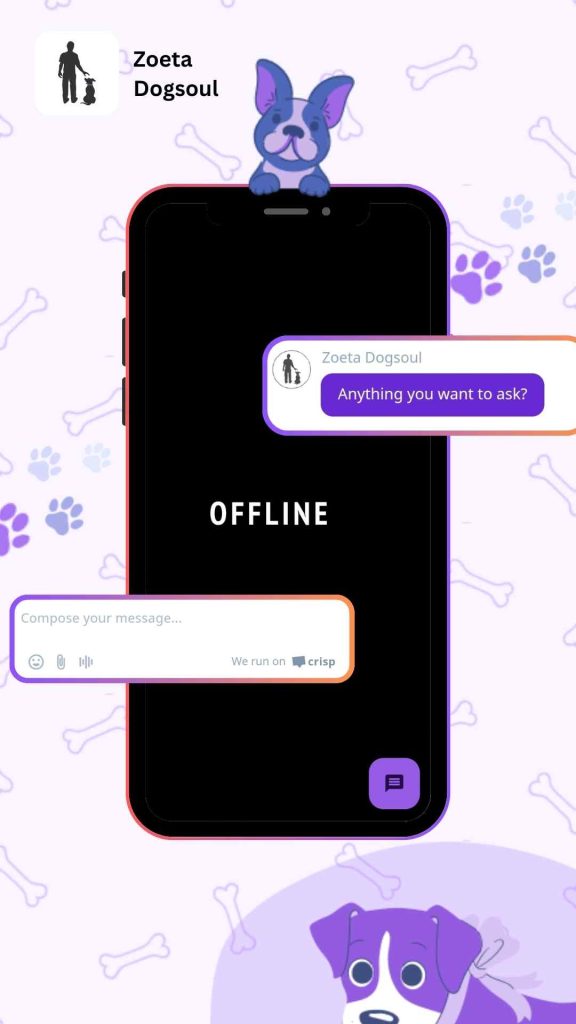
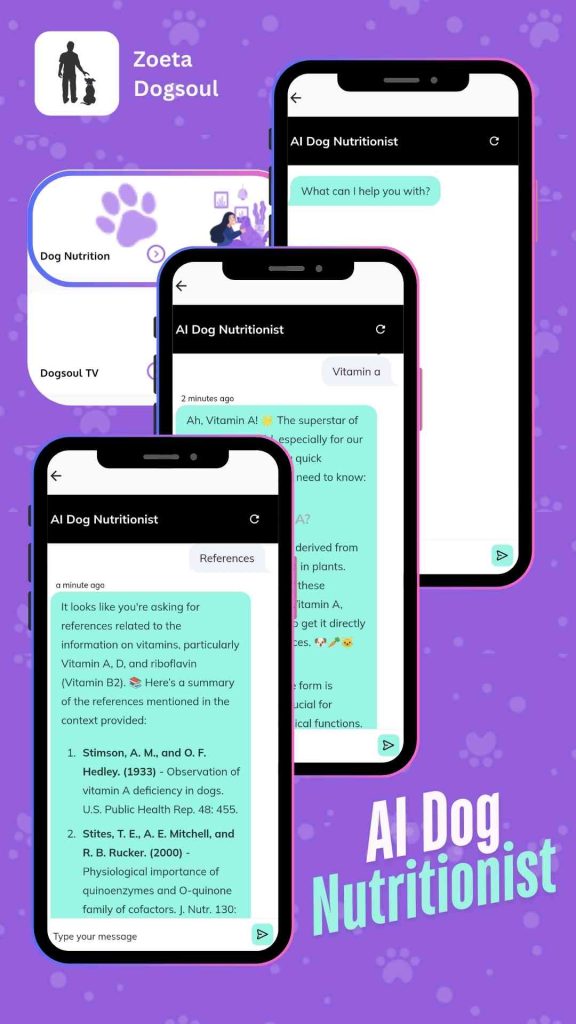
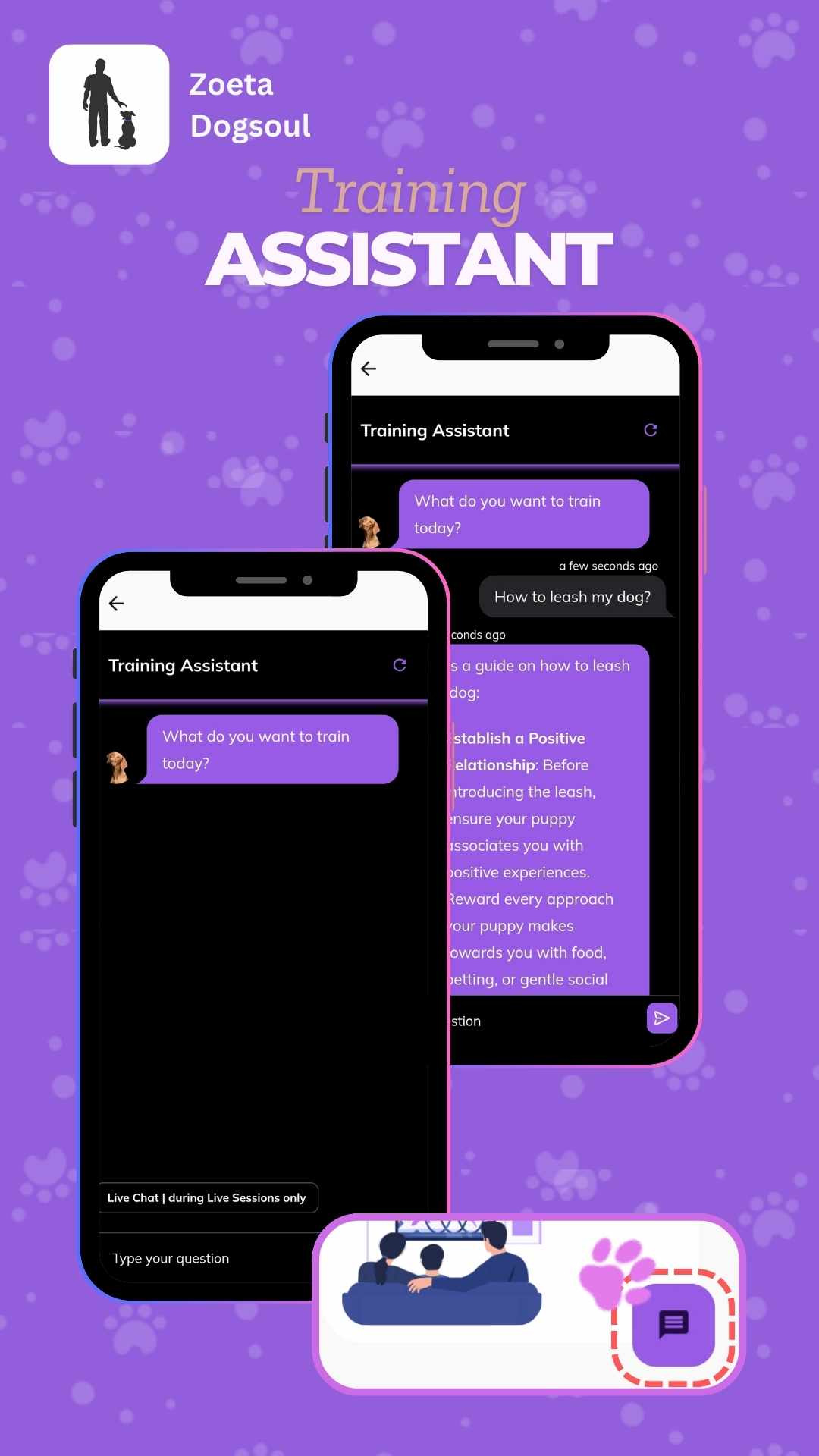
A vision for modern companionship. By honouring autonomy while nurturing cooperation, the Invisible Leash redefines reliability. It transforms education into a dialogue where dogs choose presence through trust and emotional fulfilment.
Applications in Training
Recall, Leash Walking, Social Stability, Behaviour Shaping Without Coercion
The practical manifestation of the Invisible Leash philosophy transforms everyday training challenges into opportunities for deeper connection. Rather than viewing training as programming specific behaviours, this approach treats each interaction as relationship building. The distinction is crucial: traditional training creates conditioned responses, while the Invisible Leash develops genuine understanding and voluntary cooperation. Let’s explore how this applies to common training goals.
Recall—often considered the most important yet challenging behaviour—exemplifies the paradigm shift. Traditional recall training relies on high-value rewards or consequences to compete with environmental distractions. Dogs learn that coming when called produces treats or avoids correction. But what happens when the distraction outweighs the reward? Or when treats aren’t available? The behaviour breaks down because it lacks deeper foundation. Soul Recall, by contrast, emerges from the dog’s emotional bond with their human. The pull isn’t external reward but internal connection—the deep-seated recognition that their human represents safety, pleasure, and belonging. This recall works not because it’s been rehearsed thousands of times but because the relationship itself is the reward.
Building Soul Recall doesn’t happen through repetitive drilling but through countless moments of connection. Every time your dog checks in during a walk and receives warm acknowledgment, the invisible thread strengthens. Each shared experience—exploring new environments together, navigating challenges as a team, simply being present together—adds another strand to the bond. The recall command becomes almost unnecessary; dogs return because staying connected feels better than independence. When dogs do wander, a simple shift in energy, a change in direction, or even a quiet withdrawal of attention often brings them back without words.
Leash walking traditionally involves teaching dogs to suppress their natural movement patterns and maintain an artificial position despite environmental stimuli. The Invisible Leash approach instead creates harmony through emotional and energetic synchronisation. Rather than correcting pulling, we examine why dogs pull: excitement, anxiety, conflicting desires between exploration and connection. By addressing these emotional states rather than just the behaviour, we create calm, connected walking without constant management.
The process begins before the walk starts. Dogs mirror our emotional states; if we’re rushed, stressed, or distracted, they reflect this through pulling, reactivity, or disconnection. By taking moments to breathe, centre ourselves, and establish calm presence before walking, we set an energetic template that dogs naturally match. During walks, rather than focusing on position, attention goes to maintaining connection—energetic check-ins, synchronized breathing, shared attention to environment. Dogs learn to modulate their arousal to match ours, creating harmonious movement without mechanical heel training.
Social stability—how dogs interact with other dogs, people, and environments—develops through security in the primary relationship rather than socialisation exercises. Traditional approaches often flood dogs with social experiences, hoping exposure creates confidence. But without foundational security, these experiences can increase anxiety and reactivity. The Invisible Leash approach recognises that social confidence emerges from the secure base of the human-dog bond.
When dogs trust their human’s judgment and feel emotionally supported, they navigate social situations with greater resilience. They look to their human for information about novel situations, using social referencing to determine appropriate responses. This doesn’t require commands but emotional availability—being a calm, confident presence that dogs can orient toward when uncertain. Social challenges become opportunities to deepen trust as dogs learn their human will guide them through complexity without forcing interactions or abandoning them to figure things out alone.
Behaviour shaping without coercion represents perhaps the most radical departure from traditional training. Rather than using consequences to increase or decrease behaviour frequency, the Invisible Leash approach shapes behaviour through environmental design, emotional support, and clear communication. Unwanted behaviours are viewed not as problems to eliminate but as communications to understand. A dog that jumps seeks connection—so we create alternative ways to connect. A dog that chews experiences anxiety or boredom—so we address those underlying states.
This approach utilises what the Zoeta Dogsoul method calls “clear communication markers”—consistent verbal and energetic signals that help dogs understand what creates harmony versus dissonance in the relationship. A calm “no” doesn’t punish but provides information: “this creates disconnection.” An enthusiastic “yes” celebrates choices that strengthen the bond. Dogs learn not through fear of consequences but through desire to maintain connection. They develop discrimination and self-regulation because they understand how their choices affect the relationship they value.
The absence of coercion doesn’t mean absence of structure. Clear boundaries, consistent routines, and predictable responses provide the framework within which dogs feel secure enough to offer voluntary cooperation. But these structures emerge from relationship needs rather than human dominance. They’re negotiated rather than imposed, adjusted based on individual dog needs rather than rigid protocols. This flexibility, guided by emotional attunement rather than fixed rules, creates more adaptive and resilient behaviour than any amount of drilling could achieve.
Nutrition & Behaviour Link
How Diet and Emotional State Influence Connection and Responsiveness
The profound connection between nutrition and behaviour remains one of the most overlooked aspects of dog training and relationship building. While traditional training focuses on external techniques, the Invisible Leash philosophy recognises that a dog’s internal physiological state—largely determined by diet—fundamentally affects their capacity for connection, learning, and emotional regulation. The food we provide doesn’t just fuel our dogs’ bodies; it shapes their brains, influences their emotional states, and determines their ability to engage in meaningful relationships.
Modern research reveals that the gut-brain axis plays a crucial role in canine behaviour and emotional wellbeing. The enteric nervous system—often called the “second brain”—produces many of the same neurotransmitters that regulate mood and behaviour in the central nervous system. In fact, 90% of serotonin, the neurotransmitter associated with calm and wellbeing, is produced in the gut. When dogs consume highly processed foods with artificial additives, excessive carbohydrates, or poor-quality proteins, it disrupts this delicate system, leading to inflammation that affects both physical and mental health.
Inflammation caused by inappropriate diet creates a cascade of behavioural effects. Dogs experiencing gut inflammation often display increased anxiety, reactivity, and difficulty with impulse control. They may seem “hyperactive” or “stubborn,” but they’re actually struggling with physiological discomfort that makes emotional regulation nearly impossible. It’s akin to expecting a human with a severe headache to engage in complex problem-solving—the physical distress overrides higher cognitive functions. When we address dietary inflammation, we often see dramatic behavioural improvements without any “training” intervention.
Blood sugar regulation represents another critical nutrition-behaviour link. Many commercial dog foods contain excessive simple carbohydrates that cause rapid blood glucose spikes followed by crashes. These fluctuations directly impact behaviour—creating periods of hyperarousal followed by irritability or lethargy. Dogs on high-carbohydrate diets often struggle with consistent attention, emotional stability, and impulse control. They may appear to have “ADHD” or be labeled as “difficult,” when they’re actually experiencing the canine equivalent of sugar rushes and crashes.
The quality and balance of proteins profoundly influence neurotransmitter production and thus emotional state. Different amino acids serve as precursors to different neurotransmitters—tryptophan for serotonin (calm), tyrosine for dopamine (motivation), and others for GABA (relaxation) and glutamate (excitation). When dogs consume poor-quality proteins or imbalanced amino acid profiles, it disrupts neurotransmitter production, affecting everything from anxiety levels to learning capacity. A dog deficient in specific amino acids may be physiologically incapable of achieving the calm, focused state necessary for connection and learning.
Omega-3 fatty acids, particularly DHA and EPA, play crucial roles in brain function and emotional regulation. These essential fats reduce inflammation, support neural communication, and influence mood regulation. Dogs deficient in omega-3s often show increased anxiety, cognitive decline, and difficulty with learning and memory. Supplementing with appropriate omega-3 sources can improve focus, reduce reactivity, and enhance the dog’s capacity for emotional connection—effects that no amount of training could achieve without addressing the underlying nutritional deficiency.
The timing and frequency of feeding also influences behaviour and connection capacity. Dogs fed once daily often experience prolonged hunger that creates irritability and resource anxiety. Conversely, constant access to food can disrupt natural rhythms and reduce food motivation for training. The Invisible Leash approach advocates for feeding schedules that support stable blood sugar, predictable routines that create security, and mindful feeding practices that strengthen the human-dog bond through shared ritual rather than mechanical food delivery.
Hydration status significantly impacts cognitive function and emotional regulation. Even mild dehydration affects concentration, increases anxiety, and reduces learning capacity. Many dogs on dry food diets exist in states of chronic mild dehydration, impacting their behaviour in subtle but significant ways. Ensuring adequate hydration through moisture-rich foods, multiple water sources, and attention to water quality can improve attention, reduce anxiety, and enhance overall wellbeing.
Individual sensitivities and allergies create behaviour changes often misattributed to training issues. Dogs with food sensitivities may experience brain inflammation, leading to anxiety, compulsive behaviours, or aggression. Common allergens like chicken, beef, or grains can trigger behavioural symptoms hours or even days after consumption, making the connection difficult to identify without careful observation. Elimination diets often reveal dramatic behaviour improvements when triggering foods are removed.
The Zoeta Dogsoul approach integrates nutritional awareness into behavioural work, recognising that optimal nutrition creates the physiological foundation for emotional connection and learning. This isn’t about finding the “perfect” diet but about understanding how nutritional choices influence our dogs’ capacity for relationship. When we nourish our dogs appropriately, we don’t just support their physical health—we enhance their ability to connect, learn, and thrive in partnership with us. This nutritional consciousness becomes another strand in the Invisible Leash, strengthening the bond through mindful care for our dogs’ complete wellbeing.

AI Integration
How AI-Powered Tools (RAG Systems, Chatbots, Semantic Indexing) Amplify the Invisible Leash Method for Global Accessibility
The integration of artificial intelligence into dog training represents not a replacement of human connection but an amplification of our capacity to understand and respond to canine needs. The Zoeta Dogsoul Training App, available in 95 languages across 175 countries, exemplifies how AI can democratise access to sophisticated behavioural understanding while maintaining the relationship-centred philosophy of the Invisible Leash. This technological integration doesn’t mechanise training but rather provides personalised guidance that helps humans better understand their individual dogs.
At the core of this AI integration lies Retrieval-Augmented Generation (RAG) systems that combine vast databases of behavioural knowledge with contextual understanding of individual cases. Unlike simple chatbots that provide generic responses, RAG-powered systems access comprehensive libraries of breed-specific information, behavioural patterns, and evidence-based interventions, then synthesise this information to provide tailored guidance. When a user describes their dog’s behaviour, the system doesn’t just match keywords to pre-written responses—it understands context, considers multiple factors, and generates nuanced guidance that addresses the specific situation while maintaining consistency with the Invisible Leash philosophy.
Semantic indexing technology enables the system to understand meaning beyond literal word matching. When someone searches for help with “my dog won’t listen,” the AI understands this could relate to recall issues, attention problems, relationship deficits, or numerous other underlying causes. Rather than providing a one-size-fits-all solution, the system explores context through intelligent questioning, gradually building a comprehensive picture of the dog-human relationship. This semantic understanding allows the AI to identify patterns humans might miss—recognising, for instance, that seemingly unrelated behaviours like poor recall, destructive chewing, and excessive barking might all stem from the same underlying need for increased engagement and connection.
The chatbot interface provides 24/7 accessibility to expert-level guidance, crucial for global reach where traditional trainers may be unavailable or unaffordable. But this isn’t about replacing human trainers—it’s about providing consistent, scientifically-grounded support between sessions or in areas where professional help isn’t accessible. The AI serves as a knowledgeable companion in the training journey, offering encouragement during challenges, celebrating successes, and maintaining philosophical consistency when humans might be tempted to revert to command-and-control methods during frustration.
Machine learning algorithms analyse patterns across thousands of user interactions, identifying what approaches work best for different combinations of breed, age, lifestyle, and behavioural challenges. This isn’t about creating rigid protocols but understanding the subtle variations that make each dog-human relationship unique. The system learns that while the fundamental principles of connection remain constant, their application varies: what builds connection for an anxious rescue dog differs from what works for a confident puppy, and the AI adapts its guidance accordingly.
Natural language processing allows users to describe situations in their own words, using cultural and linguistic frameworks that make sense to them. The AI translates these descriptions into behavioural understanding, then provides guidance in culturally appropriate ways. This linguistic flexibility is crucial for global accessibility—ensuring that whether someone describes their dog as “stubborn,” “willful,” “independent,” or uses culture-specific terms, the system understands the behaviour being described and responds appropriately.
The integration of video analysis capabilities allows users to submit recordings of their interactions with their dogs, with AI identifying subtle body language cues, energetic mismatches, and missed opportunities for connection. This visual feedback helps humans recognise patterns they might not consciously notice—how their tension creates pulling on walks, how their distraction leads to disconnection, how their anxiety triggers their dog’s reactivity. The AI becomes a mirror, reflecting back the relationship dynamics that shape behaviour.
Predictive modelling helps anticipate challenges before they become problems. By analysing patterns in user data, the system can identify early warning signs of developing issues—recognising, for instance, that changes in walking behaviour might precede separation anxiety, or that certain play patterns might indicate emerging resource guarding. This proactive approach aligns perfectly with the Invisible Leash philosophy of addressing underlying needs rather than waiting for problems to manifest.
The Zoeta Dogsoul TV channels, now streaming on major platforms worldwide, complement the app by providing visual learning that AI can reference and recommend. When the app identifies specific challenges, it can direct users to relevant video content that demonstrates practical application of concepts. This multimedia integration creates a comprehensive learning ecosystem where AI serves as the intelligent guide connecting users to the most relevant resources at the right moment.
Privacy-preserving federated learning ensures that while the system learns from collective user experience, individual data remains private and secure. The AI improves through aggregated insights without accessing personal information, maintaining trust while continuously enhancing its ability to help users build stronger connections with their dogs. This ethical approach to AI deployment reflects the same respect for individual autonomy that underlies the Invisible Leash philosophy—technology serves relationship, not surveillance.
Education & Certification
Teaching Trainers and Owners Worldwide to Apply This System
The transformation from command-based training to connection-centred partnership requires more than just sharing techniques—it demands a fundamental shift in how we educate both professionals and dog owners about canine behaviour and interspecies communication. The Zoeta Dogsoul Trainer Education Programme represents a revolutionary approach to professional development, one that prioritises experiential learning, emotional intelligence, and genuine understanding over rote memorisation of commands and corrections.
Traditional trainer certification often focuses on mechanical skills—teaching specific commands, managing equipment, demonstrating techniques. Graduates may know how to make a dog sit or heel but lack deeper understanding of why behaviours occur or how to build genuine partnerships. The Invisible Leash education model inverts this approach, beginning with comprehensive understanding of canine neurobiology, emotional systems, and communication patterns. Trainers learn to read dogs not as problems to solve but as individuals communicating through behaviour.
The programme structure reflects this philosophy through immersive, real-world learning rather than classroom theory. In Chiang Mai, Thailand, trainers work with diverse dog populations—from street dogs to pedigree breeds, from traumatised rescues to confident family pets. This diversity ensures graduates understand behaviour across contexts rather than just controlled training environments. Working with genuinely challenging dogs—not staged demonstrations—develops the intuition and adaptability essential for real-world success.
Education extends beyond technique to personal development. Trainers must first understand their own emotional patterns, energy projection, and communication styles before they can effectively guide others. The programme includes components on emotional regulation, mindfulness, and energetic awareness—skills often dismissed in traditional training education but fundamental to the Invisible Leash approach. Trainers learn that their internal state directly impacts their effectiveness, that who they are matters more than what they know.
The certification process evaluates competence through relationship quality rather than command performance. Instead of testing whether trainers can make dogs perform specific behaviours, assessment focuses on whether they can build trust, facilitate communication, and create environments where dogs offer voluntary cooperation. Can they calm an anxious dog through presence alone? Can they redirect aggressive behaviour through energetic shifts? Can they help disconnected dog-owner pairs find common ground? These relationship skills, rather than mechanical techniques, determine certification.
Technology amplifies educational reach without diluting quality. The AI-powered training support system helps trainers continue learning after formal education, providing ongoing guidance for challenging cases. Video analysis tools allow remote mentorship, where experienced trainers can observe and guide students worldwide. This technological infrastructure ensures consistent philosophical approach while allowing for regional and cultural adaptations in implementation.
For dog owners, education happens through multiple channels designed for different learning styles and life circumstances. The mobile app provides moment-by-moment guidance, helping owners understand what their dogs are communicating and how to respond appropriately. Rather than providing command lists, the app helps owners develop observational skills, emotional awareness, and communication clarity. It’s education embedded in daily life rather than separated into formal “training sessions.”
The streaming TV channels offer visual learning for those who learn better through observation than instruction. Watching real dogs with real challenges work through genuine relationship building provides models that owners can adapt to their situations. These aren’t polished demonstrations but authentic documentation of the messy, non-linear process of building connection. Viewers see setbacks, breakthroughs, and the patience required for lasting change.
Future Vision
The Invisible Leash as a New Standard in Humane, Science-Based, AI-Enhanced Dog Training
The future of dog training lies not in perfecting control mechanisms but in deepening interspecies understanding. The Invisible Leash methodology, supported by advancing neuroscience, AI technology, and global connectivity, points toward a fundamental transformation in how humans and dogs coexist. This vision extends beyond individual training success to encompass societal shifts in how we conceptualise and relate to our canine companions.
As neuroscience continues revealing the sophisticated emotional and cognitive capacities of dogs, the ethical imperative for connection-based approaches becomes undeniable. Future research will likely demonstrate even more profound parallels between human and canine emotional processing, further validating approaches that prioritise emotional wellbeing alongside behavioural outcomes. The Invisible Leash framework positions itself at the forefront of this scientific evolution, ready to incorporate new understanding as it emerges.
The integration of biometric monitoring technology promises to make invisible connections visible. Wearable devices that track heart rate variability, stress hormones, and movement patterns in real-time will allow trainers and owners to objectively measure emotional synchronisation. This technology won’t replace intuitive connection but will validate and refine our understanding of how invisible bonds manifest physiologically. Imagine receiving real-time feedback showing how your breathing pattern influences your dog’s stress levels, or seeing graphical representations of emotional attunement during training sessions.
Artificial intelligence will evolve from supportive tool to sophisticated training partner. Future iterations of AI-powered platforms will use advanced machine learning to recognise individual dog-human dyad patterns, predicting challenges before they manifest and suggesting precisely timed interventions. Natural language processing will enable dogs’ vocalisations to be interpreted with greater accuracy, adding another dimension to interspecies communication. The AI won’t replace human intuition but will augment our natural capacities, helping us perceive what we might otherwise miss.
Virtual and augmented reality technologies will revolutionise training education. Imagine practising energy modulation in virtual environments where you can see visual representations of your energetic field and its impact on virtual dogs. Augmented reality could overlay information about a dog’s emotional state directly into your field of vision during real-world interactions, accelerating the development of reading skills that typically take years to develop. These technologies will make sophisticated training concepts accessible to visual learners who struggle with traditional educational approaches.
The globalisation of connection-based training through digital platforms will create unprecedented opportunities for collective learning. As millions of users worldwide contribute data about successful interventions, patterns will emerge that transcend cultural and geographic boundaries. This collective intelligence will reveal universal principles of human-dog connection while respecting cultural variations in how these connections manifest. The Zoeta Dogsoul platform, already reaching 175 countries, provides the infrastructure for this global learning network.
Genetic and epigenetic research will deepen our understanding of how connection impacts biology across generations. Studies are beginning to show that stress and attachment patterns can be transmitted epigenetically, meaning that the quality of connection we build with our dogs today may influence the temperament and trainability of future generations. This long-term perspective transforms dog training from a practical necessity to an evolutionary responsibility, where each positive interaction contributes to the wellbeing of dogs yet unborn.
The integration of Invisible Leash principles into veterinary education will create a new generation of animal health professionals who understand behaviour as inseparable from physical health. Veterinarians trained in connection-based approaches will recognise how emotional states manifest as physical symptoms, leading to more holistic treatment approaches. This integration will reduce the overmedication of behavioural issues and promote interventions that address root causes rather than suppressing symptoms.
Urban planning and architecture will increasingly accommodate the needs of connected dog-human pairs. Cities recognising the social and health benefits of dog ownership will design spaces that facilitate off-leash interaction while maintaining public safety. These thoughtfully designed environments will include gradated spaces that allow dogs and humans to practice invisible connection at increasing levels of distraction, supporting the development of reliable behaviour in real-world contexts.
The legal framework surrounding dog ownership and training will evolve to reflect scientific understanding of canine sentience and emotional needs. Legislation may shift from focusing solely on control and restraint to encompassing emotional welfare and the right to species-appropriate behavioural expression. The Invisible Leash methodology, with its emphasis on voluntary cooperation rather than forced compliance, aligns with these emerging ethical and legal standards.
Educational institutions will incorporate human-animal interaction into curricula from early childhood through university level. Children will learn to read and respond to animal communication signals, developing empathy and emotional intelligence through structured interaction with dogs. This early education will create generations of humans naturally attuned to interspecies communication, making connection-based approaches intuitive rather than learned.
The economic model of dog training will shift from problem-solving to prevention and enhancement. Rather than seeking help only when behavioural problems arise, owners will engage with trainers proactively to deepen connection and prevent issues. This preventive approach, supported by AI-driven early intervention systems, will reduce the number of dogs surrendered to shelters and decrease the overall cost of dog ownership while improving quality of life for both species.
Research into consciousness and interspecies communication will potentially reveal even deeper levels of connection than currently understood. As we develop more sophisticated tools for measuring and interpreting brain activity, we may discover that the invisible leash operates through quantum entanglement or other phenomena that current science cannot fully explain. The Invisible Leash framework remains open to these possibilities, grounded in observable results while maintaining curiosity about underlying mechanisms.
The convergence of ancient wisdom and modern technology in the Invisible Leash approach represents a new paradigm in human-animal relationships. Indigenous cultures have long understood the deep connections possible between humans and animals, knowledge that modern science is now validating and technology is making accessible globally. This synthesis honours both traditional knowledge and contemporary innovation, creating approaches that are both deeply rooted and forward-looking.
As climate change and social upheaval create increasing uncertainty, the stable connection between humans and dogs becomes even more valuable. Dogs trained through invisible connection can provide emotional support and practical assistance in challenging circumstances without depending on external tools or specific environments. This adaptability makes connection-based training essential for an uncertain future where flexibility and resilience matter more than rigid obedience.
The ultimate vision of the Invisible Leash extends beyond training to encompass a fundamental shift in human consciousness. As we learn to communicate with dogs through presence, energy, and emotional attunement, we develop capacities that enhance all our relationships. The skills developed through building invisible connection—presence, emotional regulation, energetic awareness, and non-verbal communication—transform not just our relationships with dogs but our engagement with the world.
Conclusion: The Invisible Thread That Binds Us
The Invisible Leash represents far more than a training methodology—it embodies a revolutionary understanding of what’s possible when we approach dogs as sentient partners rather than subjects to be controlled. Through the integration of neuroscience, behavioural science, and cutting-edge technology, we’re discovering that the deepest connections transcend physical restraint and verbal commands, operating through channels of emotional resonance, energetic communication, and mutual understanding.
The evidence is overwhelming: dogs thrive not under dominance but through connection. When we shift from commanding to communicating, from controlling to connecting, from training to partnering, we unlock potentials in both species that traditional methods never imagined possible. The 92% improvement rate in dogs receiving connection-based intervention speaks not just to the effectiveness of these methods but to the fundamental truth they represent—that dogs, like humans, flourish when their emotional needs are met and their agency is respected.
Through platforms like the Zoeta Dogsoul Training App and comprehensive education programmes, these transformative approaches are becoming accessible globally. No longer confined to those with proximity to expert trainers or financial resources for intensive programmes, connection-based training is democratising through AI-supported learning that adapts to individual needs while maintaining philosophical consistency.
The journey from physical leash to invisible connection requires patience, presence, and a willingness to examine our own emotional patterns and energetic states. It asks us to show up fully, to be present not just physically but emotionally, to offer our dogs the gift of genuine connection rather than mere management. This path isn’t always easier than traditional training—it requires more of us emotionally and asks us to develop capacities we might not know we possessed.
Yet the rewards transcend anything achieved through command-based training. Dogs who experience invisible connection exhibit a quality of engagement, a brightness of spirit, and a depth of partnership that must be experienced to be believed. They navigate the world with confidence, knowing their human is not their master but their secure base. They offer cooperation not from fear or habit but from genuine desire to maintain the connection that nourishes them.
As we stand at this threshold between old paradigms and new possibilities, we have the opportunity to fundamentally transform the human-dog relationship. The Invisible Leash offers a path forward that honours both scientific understanding and the ineffable magic of interspecies connection. It provides frameworks for understanding while maintaining mystery, offers techniques while emphasising relationship, employs technology while prioritising presence.
The future of dog training isn’t about perfecting control—it’s about deepening connection. It’s not about making dogs obey—it’s about helping them thrive. It’s not about dominance—it’s about dance. The Invisible Leash invites us into this dance, offering not just a new way to train but a new way to be with our dogs. As more humans and dogs discover this invisible connection, we move toward a world where the leash becomes obsolete, replaced by bonds that transcend the physical and touch the soul.
This is the promise and potential of the Invisible Leash: a world where every dog experiences the security of genuine connection, where every human discovers the profound joy of true partnership, and where the ancient bond between our species evolves into something even more beautiful than our ancestors imagined. The invisible thread that connects us isn’t just about training—it’s about transformation, not just of behaviour but of consciousness itself.
The invitation stands before us: to step beyond commands and control, to embrace connection and communication, to discover what becomes possible when we trust the invisible leash that already connects us to our dogs. In making this choice, we don’t just train better—we become better, growing into the humans our dogs already believe us to be.

